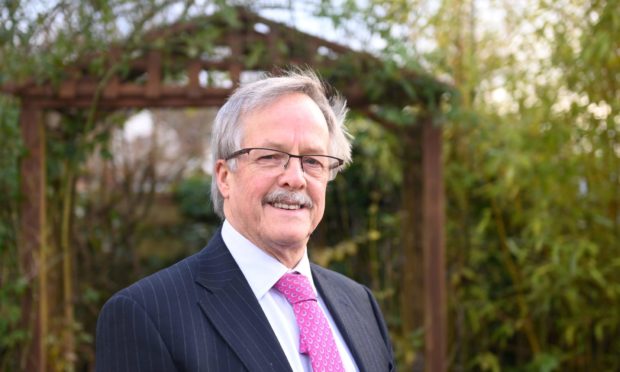Nearly 30 years ago, a fundraising campaign was launched to bring better screening for osteoporosis to Aberdeen.
Millions of pounds later, the driving force being the project and – and research which placed bone density scanners in NHS hospitals the length and breadth of Britain – has been made an MBE.
Professor David Reid has been recognised for his services to people with the bone disease and to charity.
The 69-year-old, a former head of Aberdeen University’s School of Medicine, was among the first members of the Grampian Osteoporosis Trust, founded 29 years ago to raise money for bone scanners.
“We set off to buy one scanner but we raised so much money with the help of local people that we bought two.
“That was the start of being able to offer osteoporosis services to the people of Grampian.
“I am delighted to be made an MBE and I am particularly pleased it’s in recognition of the charity work I’ve done too.
“It has been a passion of mine for many years.”
Mr Reid raised tens of thousands himself, not least through him running five London marathons and taking on a gruelling 100-mile cycle around the English capital for the cause.
He then became a volunteer with the then National Osteoporosis Society – now the Royal Osteoporosis Society – and served as chairman of its board of trustees.
Continuing his keen involvement in fundraising, the Cults resident has been described as “key” in securing £500,000 for the charity’s work on vertebral fractures caused by the disease.
Aside from donating his free time to secure funding for research into osteoporosis, Mr Reid has contributed significantly to what the medical profession knows about it too.
The professor of rheumatology helped form the understanding of the ailment, through innovative research at Aberdeen University.
With genetics expert Stuart Ralston, Mr Reid made some discoveries around the cause of condition in patients’ genes – and conducting wide-ranging mass studies to better understand its effects and how to screen for it.
This included a study of around 5,000 women over many years, tracking the health of their bones.
What he found has shaped standard practice for screening and treating osteoporosis patients.
The success of his work, Mr Reid said, “undoubtedly” owes something to the close relationship between NHS Grampian and the university where he is still an emeritus professor.
He said: “As well as head of the medical school I was the NHS’s research director, working hand-in-hand both clinically and in research with the NHS.
“It is a huge strength having a very major teaching hospital and the medical school on the same Foreseterhill site.
“It’s an enormous strength for the research and also as it allows researchers to give back to the medical side.
“It is very fortunate in Aberdeen to have a firm and large campus at Foresterhill dating back to the 1940s – it was visionary.
“It has allowed the ongoing collaborative works between the NHS and the university, a hugely important partnership.”
